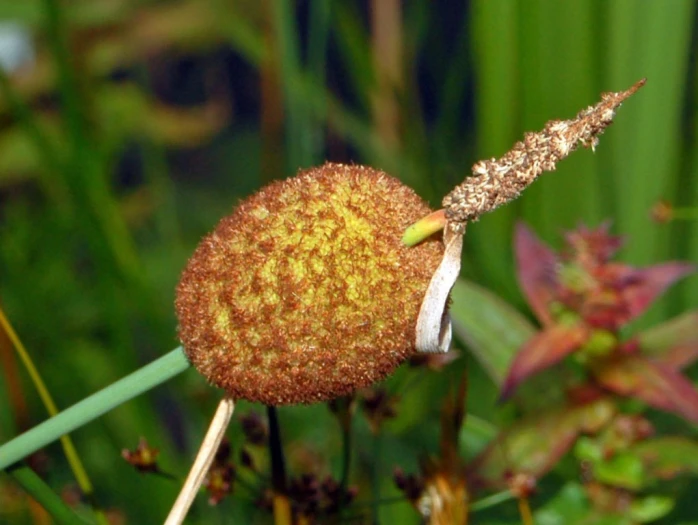Dwarf Bulrush
(Typha minima)
Dwarf Bulrush (Typha minima)
/
/

Hectonichus
CC BY-SA 3.0
Image By:
Hectonichus
Recorded By:
Copyright:
CC BY-SA 3.0
Copyright Notice:
Photo by: Hectonichus | License Type: CC BY-SA 3.0 | License URL: https://creativecommons.org/licenses/by-sa/3.0 | Uploader: Hectonichus | Publisher: Wikimedia Commons | Title: Typhaceae_-_Typha_minima.JPG | Notes: {{Information |Description=[[Lake Twenty-Two Research Natural Area]]] |Source=Own work |Date=[[:en:ISO_8601|2008:07:08]] |Author=[[User:Wsiegmund|Walter Siegmund]] [[User talk:Wsiegmund|(talk)]] |Permission=Own work, attribution required (Multi-license wi |













































Estimated Native Range
Climate Requirements for Stuttgart, Germany
| This Plant | Your Site | Plant Suitability for Your Location | ||
|---|---|---|---|---|
| • Precipitation | 2" - 69" | 27" | Your precipitation may be insufficient for this plant. Irrigate N" / year. | Irrigate N" / year |
| • High Temp. | 57°F - 99°F | 76°F | Your summer temperatures are normal for this plant. | Excellent |
| • Low Temp. | -25°F - 41°F | 29°F | Your winter temperatures are normal for this plant | Excellent |
This plant should grow well at your location with about N inches per year (Y minutes per month) of irrigation.
Summary
Typha minima, commonly known as Dwarf Bulrush or Miniature Cattail, is a perennial herbaceous plant native to marshes, fens, and shallow water bodies in temperate Europe and Asia. It is smaller than other cattails, typically reaching 12-31 inches (30-80 cm) in height. The plant features erect, slender stems and narrow, blue-green linear leaves that contribute to its grass-like appearance. Dwarf Bulrush produces dense, cylindrical, brown flower spikes from May through June, with a possible second bloom in August. The flowers are not particularly showy but are distinctive with their velvety texture and compact size.
Dwarf Bulrush is valued for its ability to thrive in wet conditions and is often used in water gardens, pond margins, and as part of naturalistic plantings in wetland restoration projects. It prefers full sun to part shade and requires consistently moist to wet soil conditions. While it is not aggressive, it can spread through rhizomes and self-seeding if conditions are favorable. Dwarf Bulrush is relatively low maintenance, but gardeners should monitor its spread to prevent unwanted naturalization. It is not known for serious pest or disease problems, but standing water can lead to root rot if drainage is insufficient.CC BY-SA 4.0
Dwarf Bulrush is valued for its ability to thrive in wet conditions and is often used in water gardens, pond margins, and as part of naturalistic plantings in wetland restoration projects. It prefers full sun to part shade and requires consistently moist to wet soil conditions. While it is not aggressive, it can spread through rhizomes and self-seeding if conditions are favorable. Dwarf Bulrush is relatively low maintenance, but gardeners should monitor its spread to prevent unwanted naturalization. It is not known for serious pest or disease problems, but standing water can lead to root rot if drainage is insufficient.CC BY-SA 4.0
Plant Description
- Plant Type: Herb
- Height: 1-2 feet
- Width: 1-2 feet
- Growth Rate: Moderate
- Flower Color: Brown, Green, Yellow
- Flowering Season: Summer
- Leaf Retention: Deciduous
Growth Requirements
- Sun: Full Sun, Part Shade
- Water: High, Aquatic
- Drainage: Slow, Standing
Common Uses
Low Maintenance, Water Garden
Natural Habitat
Native to marshes, fens, and shallow water bodies in temperate Europe and Asia
Other Names
Common Names: Dwarf Cattail , Least Bulrush , Miniature Cattail
Scientific Names: Typha minima , ? martinii , Rohrbachia minima , Typha angustissima , Typha minima , Typha minima subsp. martinii , Typha minima subsp. minima , Typha minima var. martinii , Typha pallida
GBIF Accepted Name: Typha minima